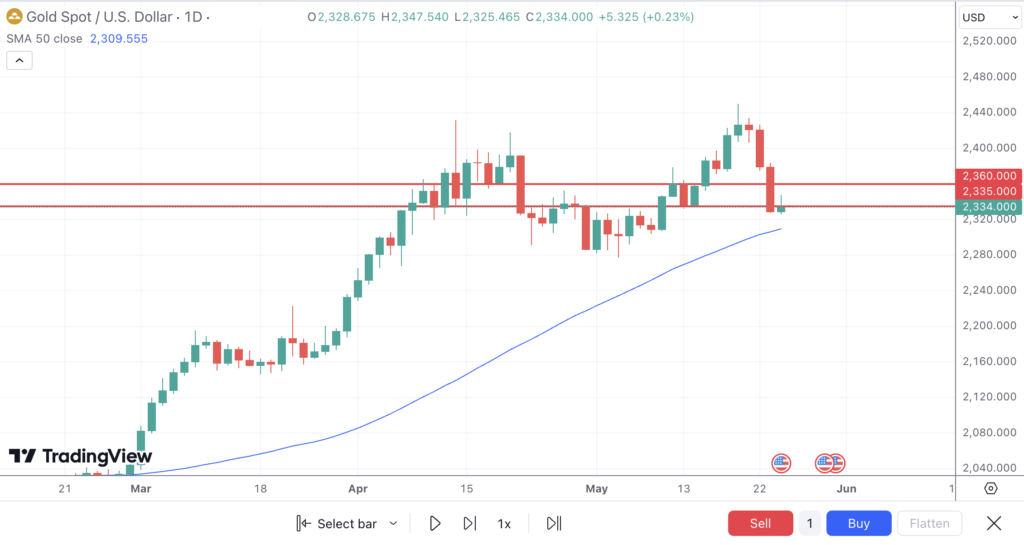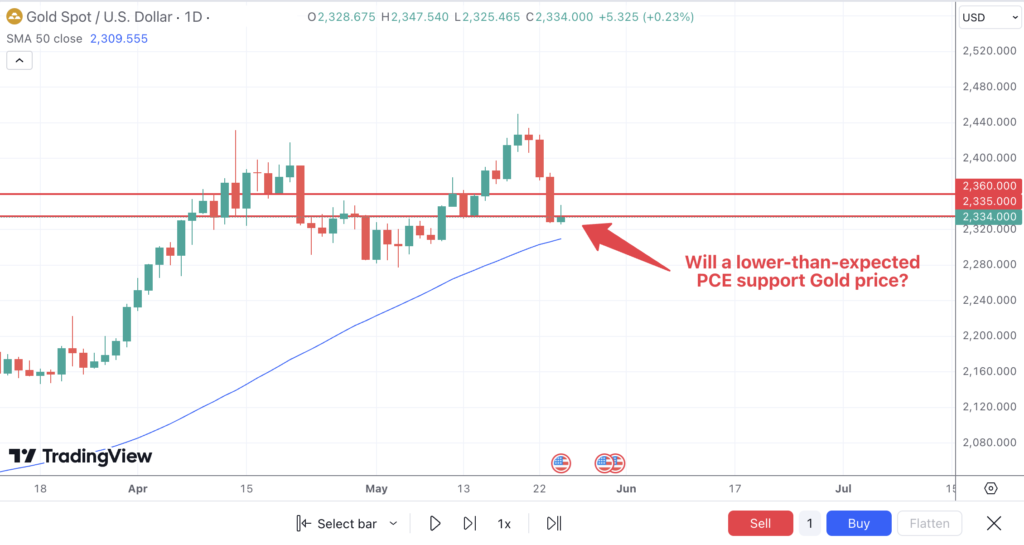Market Dynamics and Recent Performance
Gold prices have seen considerable volatility over the past week, influenced by various economic and geopolitical factors. Recently, gold experienced a significant sell-off after reaching an all-time high earlier in the week. This decline was primarily driven by a rally in short-term U.S. Treasury yields, spurred by hawkish comments from the Federal Reserve and unexpectedly strong U.S. PMI data, indicating robust business activity in the services sector. The stronger economic data suggests that the economy is resilient and capable of withstanding higher interest rates for an extended period, which has pressured gold prices downward.
Technical and Fundamental Influences

The technical outlook for gold reveals a bearish bias, with prices falling below key support levels, including a crucial trendline at $2,360 and the 38.2% Fibonacci retracement at $2,335. The next major support levels to watch are the 50-day SMA at $2,310 and the psychological threshold of $2,300. If bearish momentum continues, gold could test the $2,280 level, which marks May’s swing low. On the upside, resistance is seen near $2,375, and a break above this could lead to a retest of the $2,420 level, with the all-time high of $2,450 as a significant bullish target.
Fundamentally, gold’s recent movements have been heavily influenced by the Federal Reserve’s monetary policy outlook. The Fed’s hawkish stance, emphasizing the need for more consistent inflation data before considering rate cuts, has pushed Treasury yields higher and strengthened the U.S. dollar. This environment has reduced gold’s appeal as a non-yielding asset. However, geopolitical tensions, particularly in the Middle East, and strong demand from central banks, especially from China, have provided some support to gold prices.
Looking Forward
In the upcoming week, the market’s attention will focus on the release of the core personal consumption expenditures (PCE) price index, the Fed’s preferred inflation measure. Consensus estimates suggest a 0.3% increase for April, which could bring the annual rate down slightly. A lower-than-expected PCE reading could reignite optimism for a disinflationary trend and strengthen the case for the Federal Reserve to consider easing policy later in the year. This scenario would likely support gold prices.

Conversely, if the PCE data indicates persistent inflationary pressures, market expectations for rate cuts could be pushed further out, potentially boosting Treasury yields and the dollar, which would exert additional pressure on gold. The Fed’s upcoming communications will be crucial in shaping these expectations. Traders should remain vigilant to any shifts in the economic data or Fed rhetoric that could influence gold’s outlook.
Key Takeaway
Gold prices are poised for potential volatility in the coming week, driven by key economic data and Federal Reserve communications. While the current bearish bias suggests further downside risk, any significant changes in inflation data or geopolitical developments could alter the market dynamics, providing opportunities for both downside protection and potential upside gains.

